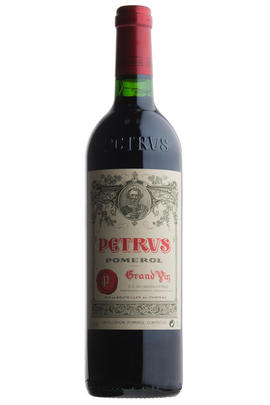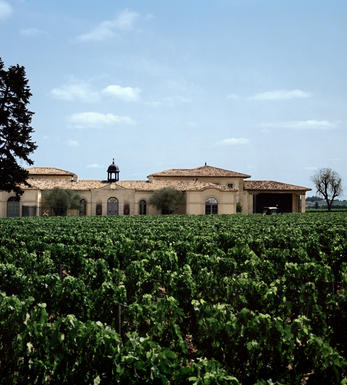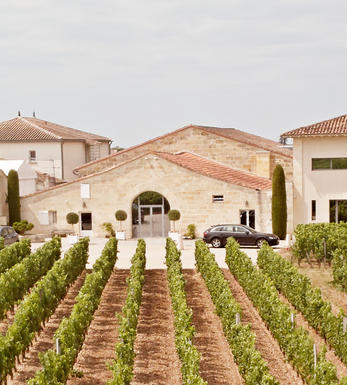
1995 Petrus, Pomerol, Bordeaux

Critics reviews
The 1995 Petrus is one of the finest vintages of the decade, a silver medal behind the brilliant 1998. This bottle constitutes the best that I have encountered. It has a beautiful, focused nose with hints of game and humidor infusing the black fruit. With aeration, more red fruit becomes evident, allied with a touch of roasted chestnut. The palate is supremely well-balanced, slightly gamey and with impressive grip. There is a bit of chutzpah about this Petrus and how it fans out towards the finish. You could broach bottles now, although this example suggests that it will be very interesting to follow over the next 20 years.
Tasted at the Petrus dinner at Hide restaurant in London.
Drink 2020 - 2040
Neal Martin, Vinous.com (July 2020)
It is interesting how this wine continues to evolve. Unquestionably one of the vintage's superstars, the 1995 Petrus is taking on a personality similar to the extraordinarily backward, muscular 1975. This is not a Petrus that can be approached in its youth (i.e., the perfect duo of 1989 and 1990). The wine exhibits an opaque ruby/purple colour, followed by a knock-out nose of pain grille, jammy black fruits, and roasted coffee. It possesses teeth-staining extract levels on the palate, a massive body, and rich, sweet black fruits buttressed by powerful, noticeable tannin. A formidably endowed wine with layers of extract, this huge, tannic, monstrous-sized Petrus will require a minimum of 10 years of cellaring.
Forget all the nonsense about Merlot producing sweet, soft, ready-to-drink wines because low-yielding, old Merlot vines made in the way of Petrus and other top Pomerols frequently possess as much ageing potential as any great Cabernet Sauvignon-based wine in the world. Look for the 1995 Petrus to last for 50+ years.
Petrus, the undisputed King of Pomerol, was an inconsistent performer between 1976 and 1988, but since 1989 there have been few Bordeaux wines that match this property for its extraordinary combination of power, richness, complexity, and elegance. The 1995 and 1996 are both noteworthy efforts.
Drink 2007 - 2050
Robert M. Parker, Jr., Wine Advocate (February 1998)
Mid-ruby with some brick on the rim. Christian Moueix describes the nose as “very dignified, a touch of Protestantism”. Lovely, elegant integration on the nose. Not a hair out of place. Relatively lightweight, but lots of dry tannins on the finish. Very straight-backed and classic. Clearly very finely delineated. Certainly patrician. Redcurrant and mint emerged, and a bit of greenness on the nose. Sandy tannins still.
Jancis Robinson MW, JancisRobinson.com (October 2005)
Saturated red-ruby color. Knockout aromas of black raspberry melted toffee, minerals and smoky oak. Explosively spicy, mulberry-flavored fruit builds and builds in the mouth. Harmonious acidity gives this extremely rich, large-scaled Petrus great balance for ageing. Finishes with substantial but thoroughly ripe tannins and palate-staining length. At this early stage, I rate this wine a hair behind the supernal '90 but ahead of the '89. Most of the '95 Moueix wines I tasted seemed a bit stunted by the bottling, but not this one!
Stephen Tanzer, Vinous.com (May 1998)
About this WINE

Petrus
Petrus is a wine estate in Pomerol on the Right Bank of Bordeaux. It is among the most celebrated and recognisable wines in the world.
While the estate can trace its history to at least 1837, it flew relatively under the radar until around the 20th century. Madame Loubat, who became the sole owner in 1945, felt that the estate was truly special, and her efforts were instrumental in establishing Petrus on the world stage. She also appointed Jean-Pierre Moueix as the exclusive agent; he and his sons Jean-François and Christian were key in building the estate’s modern reputation. The Moueix family became majority owners here in 1969. In 2018, they were joined by American-Colombian Alejandro Santo Domingo, who purchased a 20% stake.
Petrus is located atop the Pomerol plateau. Most of its vines sit on a so-called “buttonhole” of blue clay soil, known as smectite. This soil’s ability to retain water is a huge benefit in the Pomerol appellation, where drought is a known issue. The vineyard is planted mostly to Merlot.
The estate is run today by winemaker Olivier Berrouet, previously of neighbouring Château Cheval Blanc. Olivier joined in 2008, taking over from his father, Jean-Claude, who had produced 44 vintages of Petrus in his time.

Pomerol
Pomerol is the smallest of Bordeaux's major appellations, with about 150 producers and approximately 740 hectares of vineyards. It is home to many bijou domaines, many of which produce little more than 1,000 cases per annum.
Both the topography and architecture of the region is unremarkable, but the style of the wines is most individual. The finest vineyards are planted on a seam of rich clay which extends across the gently-elevated plateau of Pomerol, which runs from the north-eastern boundary of St Emilion. On the sides of the plateau, the soil becomes sandier and the wines lighter.
There is one satellite region to the immediate north, Lalande-de-Pomerol whose wines are stylistically very similar, if sometimes lacking the finesse of its neighbour. There has never been a classification of Pomerol wines.
Recommended Châteaux : Ch. Pétrus, Vieux Ch. Certan, Le Pin, Ch. L’Eglise-Clinet, Ch. La Conseillante, Ch. L’Evangile, Ch. Lafleur, Trotanoy, Ch. Nenin, Ch. Beauregard, Ch. Feytit-Clinet, Le Gay.

Merlot
The most widely planted grape in Bordeaux and a grape that has been on a relentless expansion drive throughout the world in the last decade. Merlot is adaptable to most soils and is relatively simple to cultivate. It is a vigorous naturally high yielding grape that requires savage pruning - over-cropped Merlot-based wines are dilute and bland. It is also vital to pick at optimum ripeness as Merlot can quickly lose its varietal characteristics if harvested overripe.
In St.Emilion and Pomerol it withstands the moist clay rich soils far better than Cabernet grapes, and at it best produces opulently rich, plummy clarets with succulent fruitcake-like nuances. Le Pin, Pétrus and Clinet are examples of hedonistically rich Merlot wines at their very best. It also plays a key supporting role in filling out the middle palate of the Cabernet-dominated wines of the Médoc and Graves.
Merlot is now grown in virtually all wine growing countries and is particularly successful in California, Chile and Northern Italy.


Buying options
Add to wishlist
Description
The 1995 Petrus is one of the finest vintages of the decade, a silver medal behind the brilliant 1998. This bottle constitutes the best that I have encountered. It has a beautiful, focused nose with hints of game and humidor infusing the black fruit. With aeration, more red fruit becomes evident, allied with a touch of roasted chestnut. The palate is supremely well-balanced, slightly gamey and with impressive grip. There is a bit of chutzpah about this Petrus and how it fans out towards the finish. You could broach bottles now, although this example suggests that it will be very interesting to follow over the next 20 years.
Tasted at the Petrus dinner at Hide restaurant in London.
Drink 2020 - 2040
Neal Martin, Vinous.com (July 2020)
wine at a glance
Delivery and quality guarantee